-
TrackoBit
Manage commercial vehicles with the new-age Fleet Management Software
TrackoBit -
TrackoField
Streamline your scattered workforce with Field Force Management Software
TrackoField -
Features Resources
-
Blog
Carefully curated articles to update you on industrial trends. -
White Paper
Insightful papers and analysis on essential subject matters. -
Glossary
Explore an alphabetical list of relevant industry terms. -
What’s New
Get TrackoBit & TrackoField monthly updates here. -
Case Study
Explore the cases we solved with our diverse solutions. -
Comparisons
Compare platforms, features, and pricing to find your best fit.
-
About Us
Get to know TrackoBit: our team, ethos, values, and vision. -
Careers
Join the most dynamic cult of coders, creatives and changemakers. -
Tech Support
Learn about our technical support team and services in detail. -
Events
Check out the exhibitions where we left our marks and conquered. -
Contact Us
Connect with us and let us know how we can be of service.
Top 12 Fleet Management KPIs – Bookmark Before 2025 Ends
- Author:Nandita Gupta
- Read Time:8 min
- Published:
- Last Update: May 22, 2025
Table of Contents
Toggle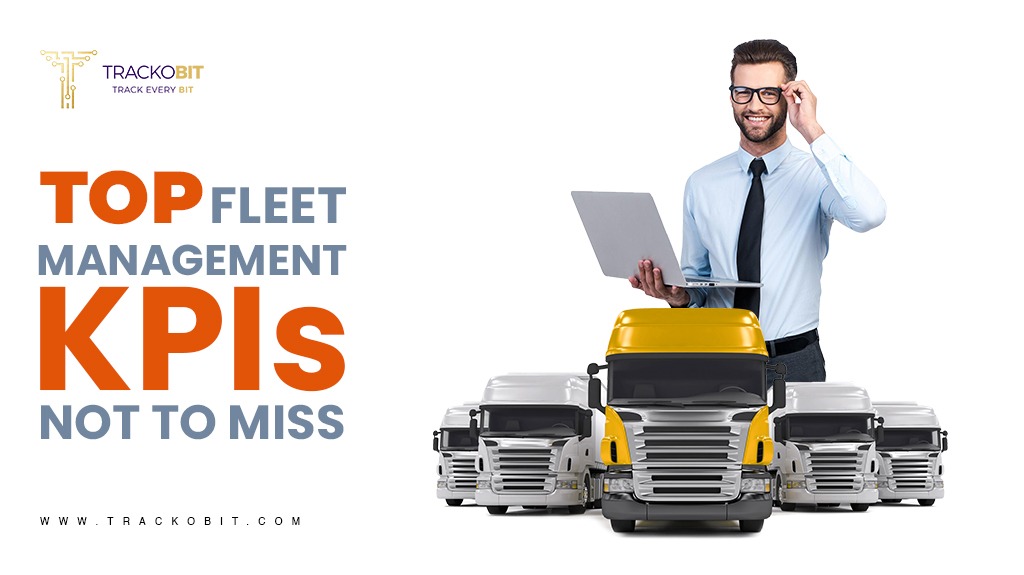
Explore the top 12 fleet management KPIs that will help you determine your logistics company’s operational, financial, and strategic achievements.
Table of Contents
Toggle
Managing a fleet of vehicles is like captaining a ship. Where Key Performance Indicators (KPIs) are like a ship’s navigational tools. Just like a captain uses tools like compasses, maps, and charts to steer the ship safely to its destination, fleet managers rely on fleet management KPIs to:
- Guide their data-driven decisions.
- Ensure efficient and safe operation of their vehicles.
By not tracking fleet management KPIs, as a fleet manager, you can experience:
- Poor visibility
- Inefficiency
- Safety risks
- Increased costs
- Customer dissatisfaction
- Compliance & environmental issues
- Missed opportunities
- Competitive disadvantage with potential financial consequences.
What are Fleet Management KPIs?
In the context of fleet management, KPIs are metrics that help identify the effective utilisation, overall performance, and efficiency of a fleet operation.
The purpose of setting and evaluating fleet management KPIs is to ensure that all of the company’s fleets are:
- Operating optimally and rationally
- Achieving cost savings on fuel and maintenance expenses
- Adhering to road safety protocols
- Meeting regulatory compliance
- Winning end customers’ trust and value through on-time delivery
As a fleet owner, you can set KPIs for any asset of choice, be it trucks, cars, vans, or other vehicles. Here are a few KPIs for fleet management that you should definitely look through with the best GPS vehicle tracking and video telematics solutions.
Top 12 Fleet Management KPIs — Not to Miss
Here are the best KPIs every fleet manager should track.
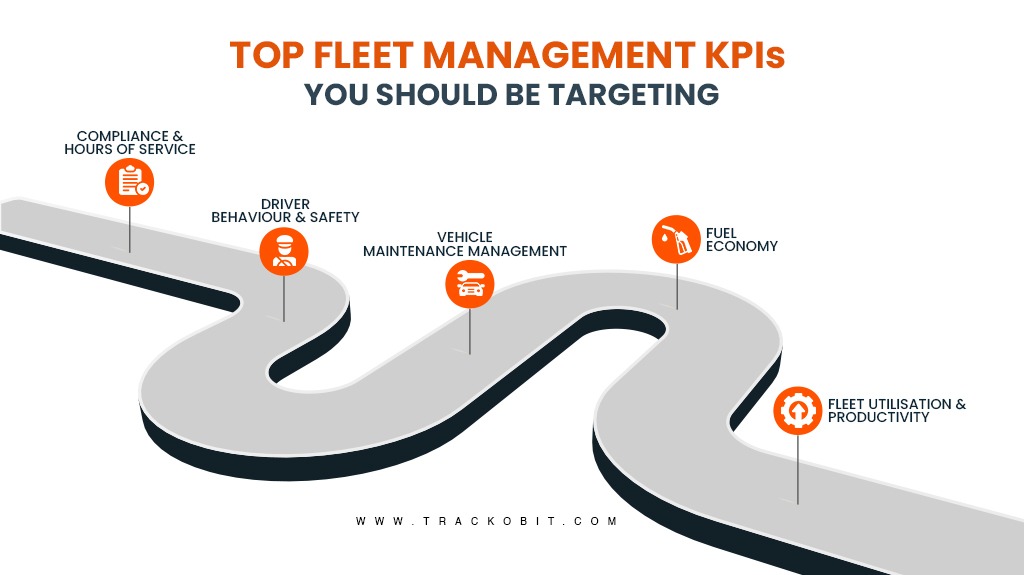
1. Vehicle Allocation & Utilization
Do you know an average fleet wastes between 5-10% of its annual budgeted dollars – either due to underutilisation of assets or poor compliance with maintenance schedule?
Effective allocation of vehicles can lead you towards good earnings during reselling. Imagine if you have 500 vehicles and dozens of them lying underutilised in the lot – bad, right? With fleet management software, gain visibility of each vehicle, their total available time, total trips covered, and how many of them are idle or inactive.
Additionally, monitoring the idle time of vehicles is important to reduce fuel consumption and unnecessary wear & tear costs.
🔍 Idle time is when vehicle ignition or engine is on, but the vehicle is not moving.
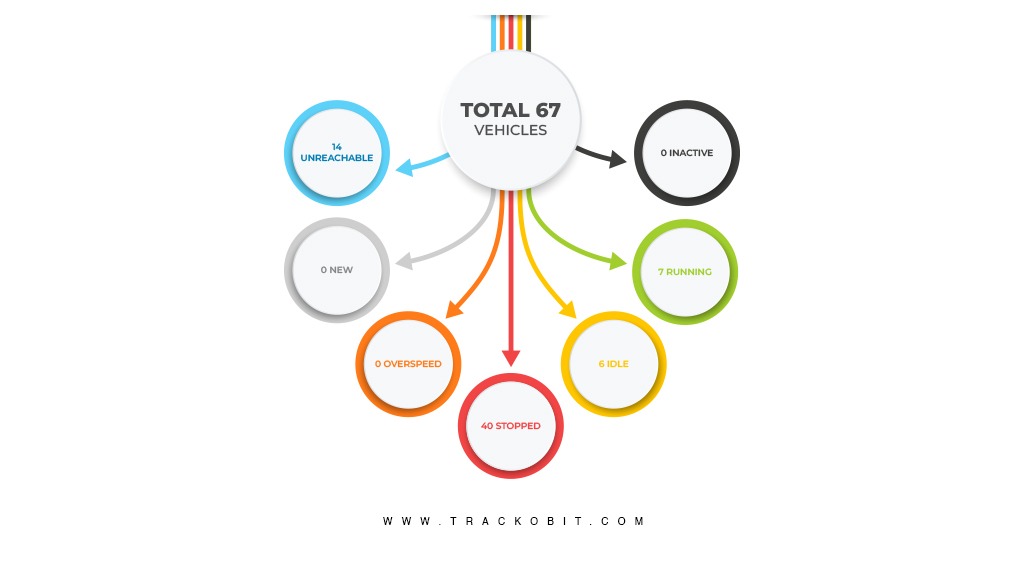
| 💡 A high utilization rate of vehicles = assets are efficiently utilised. |
2. Fuel Economy
Measuring fuel consumption is one of the crucial KPIs in fleet management. It helps ascertain how efficiently vehicles are operating. Timely monitoring and optimising fuel consumption help:
- Reduce fuel spending.
- Enhance fleet efficiency.
- Lower carbon footprints.
- Improve driving habits & patterns.
You can calculate the fleet’s fuel efficiency by identifying fuel liters consumption per Km.
3. Route Optimization
It’s important to measure the efficiency of routes taken by each vehicle in the fleet. As it can help look into fuel consumption patterns and speed up delivery times.
By using fleet management software offering route optimization, fleet managers identify and plan the most optimal routes for their delivery agents. Doing so will help:
- Reduce mileage and fuel consumption.
- Minimise the vehicle’s time on the road.
- Improve on-time deliveries.
- Minimise empty miles to enhance overall operational efficiency.
4. Maintenance Costs
Setting fleet maintenance KPIs can help you effectively monitor the cost of maintenance and repairs for each vehicle in the fleet. It can help optimise maintenance schedules, increase vehicle uptime, and reduce their breakdown.
With fleet management software, you can:
- Generate reports to monitor vehicle’s health.
- Schedule vehicles’ timely maintenance by setting reminders.
- Compile expenses related to vehicle repairs and review their invoices.
- Compare costs to budgets for cost control.
5. Driver Behaviour & Safety
| Do you know that 42% of fleet owners have seen fewer safety incidents ever since they started using fleet tracking software? |
Negligent drivers with incompetent driving skills — not only risk safety on the road but also contribute to vehicle wear & tear, and heavy fuel consumption. Thus, tracking driver behaviour on the road is a must to prevent accidents, incidents, or traffic violations.
Video telematics solutions can help you have a 360-degree view of the driver’s in-cabin activities & conduct on the road.
Read Blog – 8 Tips on How to Increase Your Fleet Safety
6. Driver Productivity
Measuring the efficiency and productivity of drivers is an important aspect. To monitor the drivers’ productivity, set KPIs to evaluate:
- Total distance travelled
- Frequency of stops or halts
- Total trips per driver
- Successful and timely deliveries
Set KPIs that help evaluate drivers’ productivity and efficiency in:
👍Completing tasks
👍 Optimising routes
👍 Minimising idle time
👍 Maximising deliveries or services
This will help you timely evaluate good and inefficient drivers. And help coach the underperforming ones and reward the efficient ones.
Other Important KPIs for Fleet Management and Maintenance
Here are some other not-so-common but equally important fleet management KPIs that indirectly impact the operational efficiency of logistics, delivery & service businesses:
7. Downtime
Establish a KPI that helps you identify the amount of time your vehicles are out of service, either due to bad maintenance/repair schedules or poor allocation. This will help you overview the productivity of each vehicle.
8. Compliance with Regulations
Set a KPI wherein you can ensure that your vehicle and drivers are complying with:
- Legal requirements pertaining to permits, licensing
- Emissions and overall environmental standards
Complying with the above will help avoid legal issues, fines, and, in most cases, jail time.
Read Blog – BioFuel an Alternative to Fossil Fuel|G20
9. Vehicle Age and Depreciation
Continuously monitoring the age of vehicles will help you plan their timely replacement. And will effectively help record their depreciation rates for better budgeting and revenue.
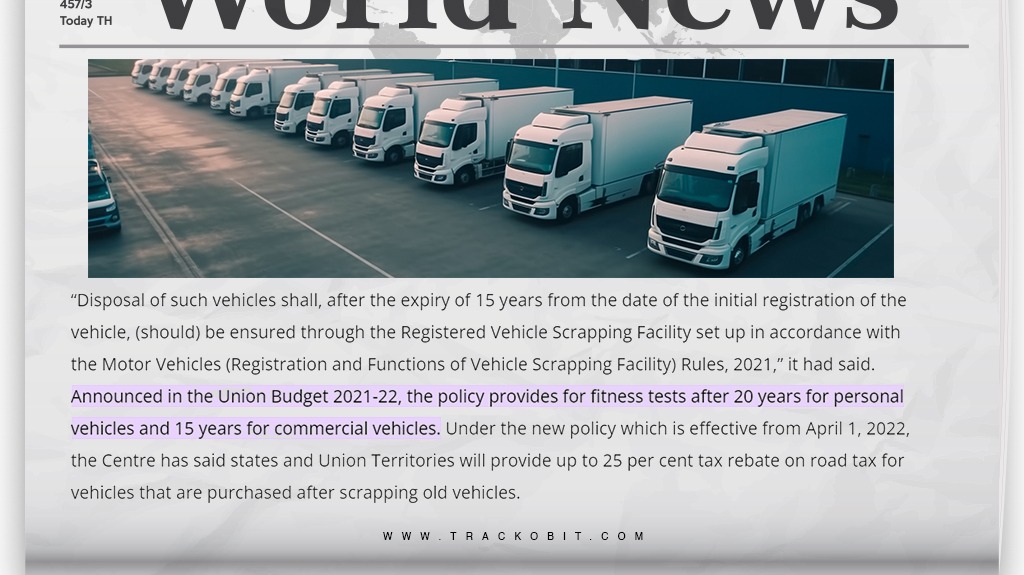
10. Customer Service Metrics
In fleet management, satisfying customers on the receiving end is a huge win. Track customer satisfaction by timely measuring metrics like:
- On-time deliveries
- Updated ETAs and easy PoD (proof of deliveries)
- Safe transportation of time & temperature sensitive goods
11. Environmental Impact
Measuring emissions and fuel consumption is important to track the environmental impact of the fleet and identify opportunities for reducing the carbon footprint.
12. Total Cost of Ownership (TCO)
Fleet’s true cost goes way beyond just purchasing costs and fuel or maintenance costs. TCO (Total cost of ownership) helps ascertain the actual cost of owning and operating a vehicle.
It helps you evaluate costs associated with:
- Owning and operating a vehicle or acquisition
- Maintenance spends
- Fuel costs
- Insurance
Timely evaluate the true cost of each vehicle in the fleet and compare it against the ROI to know the progress. Each time, ensure your ROI of each vehicle is higher than the TCO.
| 🔎 Return of Investment (ROI) > Total Cost of Ownership (TCO) |
Fleet management software and telematics systems are often used to track fleet management KPIs data that helps fleet managers make informed decisions to optimize their resources & operations. However, the choice of tracking specific KPIs for fleet management and maintenance is dependent on the nature of your fleet operations, end goals, and industry type.
Comprehensive Fleet Management KPIs – A Cheat Sheet!
Identifying Key Performance Indicators (KPIs) for fleet management and maintenance is very important for optimising your fleet operations and reducing costs. Here are some quick points that can help you develop KPIs for your fleet.
| Variables | KPIs |
| Fuel Efficiency |
|
| Vehicle Utilization |
|
| Fleet Maintenance KPIs |
|
| Accident Rate
Cost Management |
|
| Cost Management |
|
| Driver Behavior |
|
| Route Optimization |
|
| Asset Tracking |
|
| Customer Satisfaction |
|
| Predictive Maintenance Accuracy |
|
| Carbon Emissions |
|
| Operational Efficiency |
|
Turn Your Every Fleet Management KPI Positive with TrackoBit!
Applying and monitoring the above-mentioned KPIs can help your business find lag in your current fleet’s operations. TrackoBit’s cutting-edge fleet management software lets you:
- Track assets in real-time
- Optimise routes
- Monitor driver behavior
- And reduce maintenance costs
Turn your fleet maintenance and management KPIs positive with our fleet management software today!
FAQs on Fleet Management KPIs
-
What is fleet management KPI?
Fleet management KPIs (Key Performance Indicators) are parameters or metrics that help measure and optimise vehicle operations, which further include: 1. Engine performance 2.Fuel efficiency 3. Maintenance costs 4. Driver safety and lots more
-
Why are fleet management KPIs important?
Tracking fleet management KPIs lets you identify the gaps in current fleet operations and take corrective actions to improve them — to achieve better effectiveness & efficiency.
-
What is the key to optimise fleet operations?
To optimise fleet operations, invest in sound fleet management solutions that come with: 1. Driver behaviour monitoring tools 2. Route planning software 3. Video telematics system 4. Fuel monitoring solutions 5. Video telematics system 6. And other customisation your business desires
-
What are important metrics to track in fleet management?
Driver safety, hours of service, route management, and fuel economy are a few important metrics to track in fleet management.
Nandita is the Team Lead for Content Marketing at TrackoBit, bringing over a decade of experience in B2B, B2C, and IoT sectors. She has a proven track record of helping Read More
Related Blogs
-

What Makes TrackoBit’s Video Telematics Software Truly Next-Gen?
Shemanti Ghosh December 17, 2025TrackoBit’s video telematics software blends smart video intelligence with full server control. The result? Superior fleet reliability and safety.
-

Plug, Pair, Perform TrackoBit Introduces BLE Sensor Integration
Tithi Agarwal November 26, 2025TrackoBit’s BLE Sensor Integration enables wireless, real-time monitoring with faster installs and accurate insights. It improves fleet efficiency, visibility, and…
-

How to Use Driver Behavior Reports as a Sales Hook to Close Big Fleets
Tithi Agarwal October 16, 2025TrackoBit’s driver behavior reports empower fleet providers to win big contracts by showcasing safety, efficiency, and measurable ROI.
-
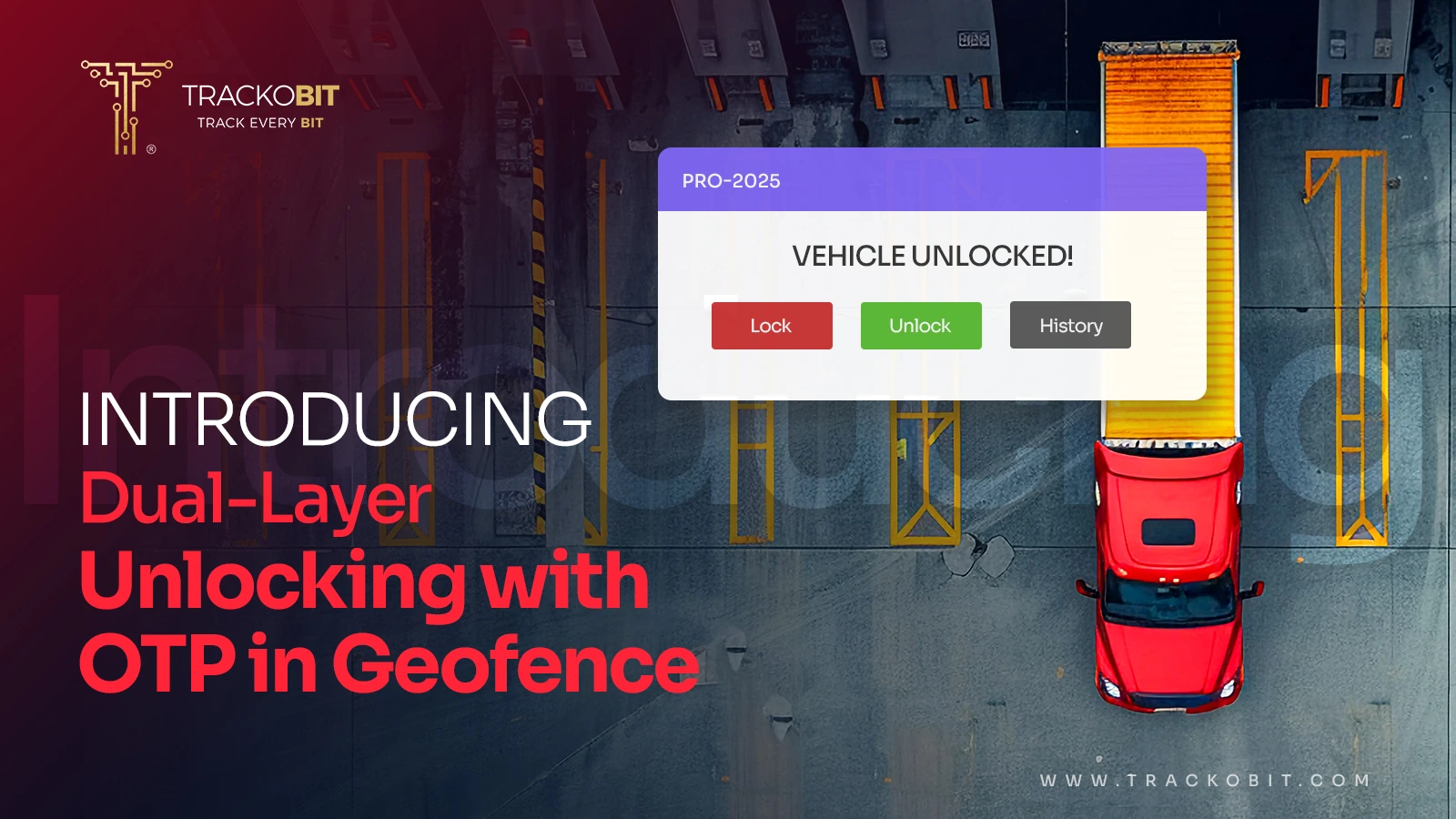
TrackoBit’s Unlocking in Geofence with OTP: Elevating Cargo Protection
Tithi Agarwal September 16, 2025TrackoBit’s latest feature – Unlocking in Geofence with OTP lets you lock out theft and unlock cargo only at the…

Subscribe for weekly tips to optimize your fleet’s potential!
Your inbox awaits a welcome email. Stay tuned for the latest blog updates & expert insights.
"While you're here, dive into some more reads or grab quick bites from our social platforms!"Stay Updated on tech, telematics and mobility. Don't miss out on the latest in the industry.
We use cookies to enhance and personalize your browsing experience. By continuing to use our website, you agree to our Privacy Policy.


































